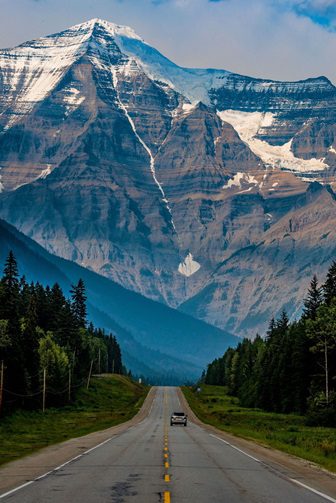 British Columbia in Canada’s West welcomes thousands of Australian and New Zealand visitors annually, seeking to explore the lush wilderness in summer months, and the magical snow-covered towns and ski resorts in winter. According to Destination British Columbia, overnight visitor numbers to British Columbia are projected to be 231,000 overnight stays in 2024 from Australia, a 29% increase on 2023.
British Columbia in Canada’s West welcomes thousands of Australian and New Zealand visitors annually, seeking to explore the lush wilderness in summer months, and the magical snow-covered towns and ski resorts in winter. According to Destination British Columbia, overnight visitor numbers to British Columbia are projected to be 231,000 overnight stays in 2024 from Australia, a 29% increase on 2023.
Enticing travellers to explore more within the province, British Columbia’s Destination Marketing Organisation is launching Rainforest to Rockies, the first of several exceptional British Columbia place brands to roll out globally. The concept falls within “Invest in Iconics,” a long-term strategy that emphasises geographic and seasonal growth, as well as increasing visitation.
The new Rainforest to Rockies place branding is designed to inspire travellers to visit more parts of the popular Canadian province in a variety of seasons with the development of itineraries that appeal to tourists around the world.
The Rainforest to Rockies itineraries will offer journeys through ever-changing landscapes: from ocean to city, to rainforest, fertile valleys, desert, crystal clear lakes, towering mountains and glaciers, all inspiring visitors to slow down and make the most of their journey.
All journeys start in the gateway city of Vancouver, with the option to be explored by car, rail, bike or coach. Some of the highlighted routes are summarised below:
The Classic: Along the Trans-Canada Highway
The essence of BC, from big cities to canyon towns, valley floors to mountain ridges, rivers to lakes to cascades
Experience nature touched by and tied to a history going back millennia on a journey 778 km (483 mi) along the Trans-Canada Highway, ending at Yoho National Park
Winding Road: Crowsnest Highway 3 to the Canadian Rockies
A slow, southern route for culture buffs and foodies, showcasing the ways in which different cultures interact with a varied landscape
Enjoy farm-fresh, organic bounty, from 30 varieties of tomatoes to nine recognised appellations of wine on a 1,035 km (643 mi) route via the Crowsnest Highway, ending in the mountain town of Fernie
Big and Wild: North to Mount Robson
An active, adrenaline-pumping journey with a backdrop of sweeping proportions. From secret trails and solitary paddles to challenging climbs and wildlife watching, this 709 km (441 mi) route travels via the Sea-to-Sky and Yellowhead highways, ending at Mount Robson, the highest peak in the Canadian Rockies
Detailed suggested itineraries and more information can be found at HelloBC.com/rainforest-to-rockies
Rainforest to Rockies Consumer Video: https://www.youtube.com/watch?v=y0xPZ6H5YkU
News and/or Noteworthy interests on a Rainforest to Rockies journey:
Experience West Coast culture and cuisine in Vancouver, Canada’s newest “Michelin” city.
New luxury accommodations offer even more reasons to take time to explore Rainforest to Rockies. Since late summer 2023, the Azur Hotel, an Art Deco-inspired property with a custom rooftop restaurant just steps from Vancouver’s financial and fashion districts, has been welcoming guests. The Wedge Mountain Lodge & Spa opened in Whistler in November 2023, offering groups an exclusive, private retreat.
Also adding to the route’s appeal is the growing list of UNESCO World Heritage Sites and Protected Areas, from the famed Canadian Rockies to Átl’ḵa7tsem/Howe Sound, Canada’s 19th Biosphere Reserve.
Taste wines from small batch wineries in the Okanagan, BC’s premier wine-producing region, which is also home to the country’s first District Wine Village and one of the largest producers of organic wines.
Rainforest to Rockies invites visitors to take advantage of various modes of transportation, from train to ferry to seaplane. Vancouver-based Harbour Air is the largest seaplane airline in North America and is converting its fleet to all-electric operation.
Experience old growth trees on a new hiking trail. Near completion is the new 11-mile Mxlip (Cedar) Trail in Rossland, named for the towering cedars that mark the beginning of the trail.




















